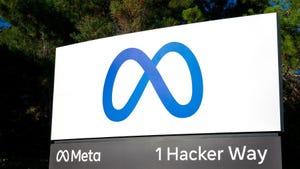
Insight and analysis on the data center space from industry thought leaders.
Data Center Retrofit StrategiesData Center Retrofit Strategies
What are the best opportunities for cost-effective retrofits and energy-usage reduction in data centers? A look at the merits of upgrading electric infrastructure, server virtualization and cooling optimization.
April 20, 2010
Coy Stine is Director of Data Center Services for Bluestone Energy Services, a national design/build engineering firm focused on the cost effective reduction of energy use.

CoyStine
COY STINEBluestone Energy
In these uncertain financial times, reducing data center operating costs has become a top corporate priority. Unfortunately, limited budgets often preclude efficiency initiatives that have high initial costs. An increasingly popular alternative approach involves leveraging technologies that improve the energy efficiency of existing equipment while minimizing up-front outlays and data-center disruption. Regardless of the methodology, considerations relating to safety, reliability and data-center uptime must be faced. Finding the right solution depends on a careful examination of financial and environmental goals, data center composition and layout, time horizon and budget.
What are the best opportunities for cost-effective retrofits and energy-usage reduction in data centers? Upgrading electrical equipment is one option. Replacing UPS and PDU equipment provides two immediate benefits: less electrical loss, and less waste heat to remove. Efficiency gains depend on the age of the equipment being replaced, but a 5% gain in UPS efficiency can lead to a 10%-60% reduction in annual operational costs. These items can give attractive returns, but relatively high capital costs, possible IT downtime and daunting electrical work may make approval difficult.
Another option is server virtualization, which provides substantial energy savings by eliminating redundant server hardware. Unfortunately, migrating applications and data to virtualized platforms requires technical expertise for both the initial transition and ongoing software maintenance. Due to the inherent technological complexities, server virtualization is often best implemented gradually. New server systems can be virtualized first – before they are brought on-line for the first time. As expertise grows, existing systems can be transitioned to virtualized platforms – starting with systems having low or variable load.
Cooling Optimization
The best candidate for data-center cost reduction often involves the cooling infrastructure. With relatively simple modifications, up to 40 percent of cooling costs can be eliminated. For air-cooled server environments, the general approach is to deliver cold air directly to the IT hardware and prevent hot exhaust air from mixing with the supply air.
Some airflow optimization systems are passive in nature, relying on blocking air flows from mixing, while others utilize sophisticated control systems and variable-speed fans. In many cases, successful cooling optimization may allow one or more CRACs (Computer Room Air Conditioners) to be switched off entirely or placed in stand-by mode.
In either case, the end result is far fewer fans, re-heaters, humidifiers, compressors and heat-ejection equipment requiring power. Systems that can grow (or shrink) easily with the IT demands are desirable, as are real-time thermal and energy monitoring systems. These retrofits almost always maintain 100 percent uptime of IT equipment during installation, and the simple payback on these strategies is usually under two years, and often closer to one year.
Some formerly controversial methodologies that are slowly gaining acceptance include reliance on free-cooling of air-side or water-side cooling mediums, utilizing ventilation rather than conditioned air, allowing temperature set points to be raised, dropping humidity set points, and even allowing humidity to float with outdoor air conditions.
All of these approaches decrease data-center energy usage to such an extent that many electric utilities incentivize their implementation. Utility programs usually cover anywhere from 15% to 70% of the cost of the project. Needless to say, these incentives often greatly improve project ROI, easing managerial acceptance and enthusiasm.
If approached properly, an energy-efficiency program can save money while avoiding the pitfalls of data center downtime and destabilization. Given that even seemingly small issues like temporarily moving an individual rack can be a deal-breaker, the most successful methodologies maintain existing equipment configurations. Retrofit solutions that avoid reconfiguration, provide significant energy savings and qualify for utility incentives are the most likely projects to move forward. Because the benefits of these projects continue as long as the data center is in operation, research into data center energy efficiency retrofit projects is a worthwhile use of a data center manager’s time.
Industry Perspectives is a content channel at Data Center Knowledge highlighting thought leadership in the data center arena. See our guidelines and submission process for information on participating. View previously published Industry Perspectives in our Knowledge Library.
About the Author
You May Also Like









